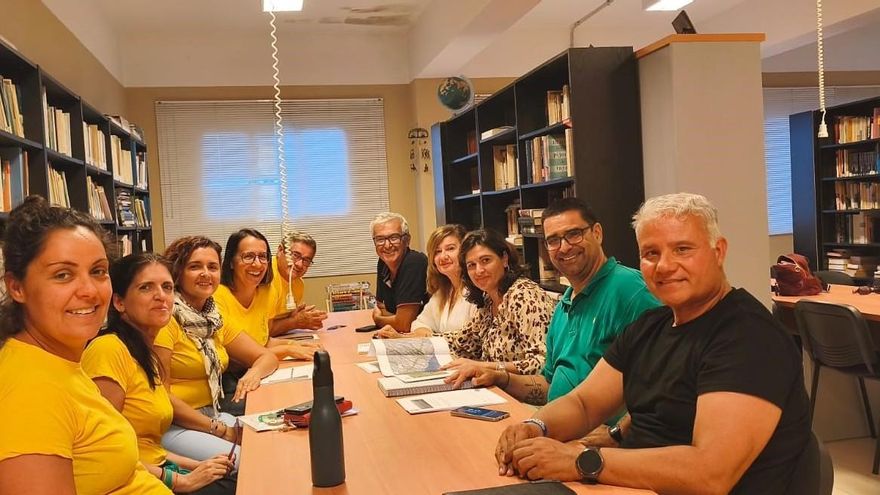
E. D.
The Mayor of Güímar, Carmen Luisa Castro, and her governing team conveyed their opposition to the construction of the wind farms El Pilón I and El Pilón II in Agache to the Ecomarca Platform. This was communicated during a meeting held yesterday evening. “At all times, they were unequivocally supportive of the group and opposed to the implementation of this project,” stated the group’s spokesperson, Hiurma Rodríguez. The mayor reaffirmed this stance: “I do not want a similar situation to Arico; I reject that park. What I want is the hydroelectric plant.
The Ecomarca Platform for the Defence and Protection of Southeast Tenerife informed the local government that the wind farm project affects the natural and cultural heritage of the Malpaís of Güímar, the Agache area, and the Herques ravine, which are included in the Natura 2000 Network. The project violates current urban and environmental regulations, such as land use laws and the general planning documents of Fasnia and Güímar. It causes severe impacts on biodiversity, landscape, and the health of local residents due to noise, light pollution, massive land movements, and the failure to enhance and utilise existing parks, contradicting the energy and environmental strategies for the Canary Islands.
Informing the Public
The group requested support from the Güímar City Council to organise educational workshops aimed at the public. These sessions will feature experts who will inform attendees about the ecological and heritage richness of the area and the potential harms arising from the installation of a wind farm in the Agache region. They will also communicate this request to the Fasnia City Council, aiming for these workshops to be conducted on an intermunicipal basis.
The Platform, which is still awaiting a response to the objections submitted, hopes that these actions “contribute to an informed public debate and the effective protection of the natural and cultural heritage of southeast Tenerife.”
Political Management
The meeting held yesterday (which was originally scheduled for last Saturday) was attended by five members of the Ecomarca Platform, the Mayor of Güímar, Carmen Luisa Castro, and councillors Francisco del Rosario, Carlos Llarena, José Miguel Hernández, and Socorro González.
The mayor offered to mediate with the Canary Islands Government to relay to the President, Fernando Clavijo, and the Minister for Ecological Transition, Mariano H. Zapata, the arguments opposing the establishment of these wind farms in Agache.
Luisi Castro’s Explanation
Carmen Luisa Castro explained to the Platform that they have never supported the construction of the wind farms and emphasised that during the council meeting on April 21, they voted against a report whose content they deeply questioned, as they were not given the opportunity to present objections, and the issue was discussed at the last minute. She stated, “We were very upset by the manner of the municipal government” at that time.
The mayor stressed that “we want clean energy, but not in this way.” Castro referred to Arico, where numerous wind and solar installations are present, to assert that she does not want a similar situation to occur in her municipality.
In addition to clarifying that the authority to authorise the wind farm does not rest with the municipality, Carmen Luisa Castro explained that Güímar missed the opportunity to be unequivocal in its agreement to reject this project “by not doing what Fasnia did—taking a clear political declaration to the full council on the matter.”
The Wind Farms
DISA Energía Renovable, SLU is promoting the construction of the wind farms El Pilón I, which will have 15 megawatts and four wind turbines, and El Pilón II, with 8.5 megawatts and two wind turbines. These will be developed across 181 plots located in Fasnia and Güímar. To transport the energy produced, the installation of 24 towers is planned up to the slopes of Güímar, from where the route will be buried until it connects with the substation of the Güímar Industrial Estate. The total investment is estimated at 22.3 million euros (14.3 million for El Pilón I and 8 million for El Pilón II).
















